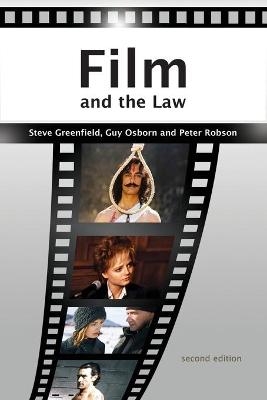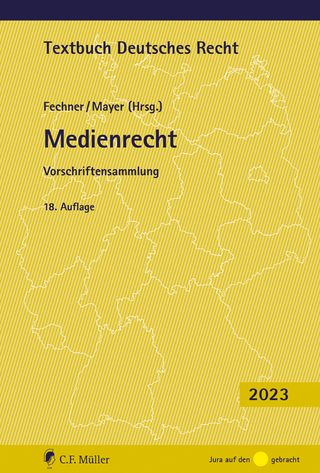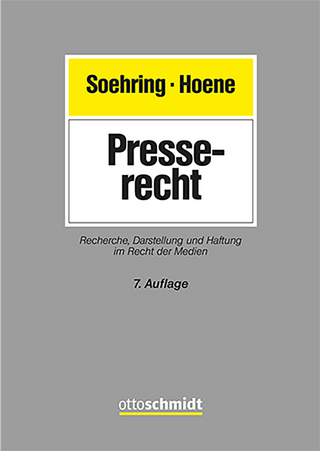
Film and the Law
Hart Publishing (Verlag)
978-1-84113-725-4 (ISBN)
Described by Richard Sherwin of New York Law School as the law and film movement's 'founding text', this text is a second, heavily revised and improved edition of the original Film and the Law (Cavendish Publishing, 2001). The book is distinctive in a number of ways: it is unique as a sustained book-length exposition on law and film by law scholars; it is distinctive within law and film scholarship in its attempt to plot the parameters of a distinctive genre of law films; its examination of law in film as place and space offers a new way out of the law film genre problem, and also offers an examination of representations of an aspect of legal practice, and legal institutions, that have not been addressed by other scholars. It is original in its contribution to work within the wider parameters of law and popular culture and offers a sustained challenge to traditional legal scholarship, amply demonstrating the practical and the pedagogic, as well as the moral and political significance of popular cultural representations of law. The book is a valuable teaching and learning resource, and is the first in the field to serve as a basic guidebook for students of law and film.
Steve Greenfield is a senior academic in law at the University of Westminster. Guy Osborn is Professor of Law at the University of Westminster and Professor (II) in the Department of Sociology and Political Science at the Norwegian University of Science and Technology in Trondheim, Norway. Peter Robson is a Professor of Law at the University of Strathclyde.
1. Film and the Law: an Orientation Law and Film Scholarship Methodology Language Empirical Work and Causation The Heterogeneous Goals of Law and Popular Culture 2. The Penetration of Law and Film The Framework of Legal Education Law and Context-the Role of the Socio-legal Imagination Popular Culture and Law and Popular Culture The Use(s) of Film Film and Law Teaching Law and Film Courses 3. Theoretical underpinnings and physical boundaries-defining the territory The Dramatic Dimension of Law Visuality and Image The Cult of the Robe: Dress and Appearance in Film Defining the Parameters of Law and Film: Academic Approaches Inside the Courtroom The Phases of Law Conclusion 4. Strictly Courtroom? Law Film and Genre Critical Aspects of the Courtroom Drama Laughing at the Law 5. The British Law Film: From Genre to Iconography Britishness and Film: Protection and Representations British Law Films The Iconography of Law Conclusion 6. Military Justice on Screen Filming Military Justice The Scapegoat The Courtroom Drama in Uniform Justice and Legality in the Military Context Conclusion 7. Assessing Cinematic Lawyers (I): Heroes and Villains The Heroic Lawyer: When Atticus Met Lincoln Flawed Characters? Assessing the Good/Bad Categories 8. Assessing Cinematic Lawyers (II): Alternative Categorisations Introduction Alternative Categorisations Conclusion 9. Missing (in) Action (I): Judges The Invisible Judge The Corrupt Judge The Troubled Judge The Comic Judge The Political Judge Judges as Protagonists-the Judge under the Spotlight 10. Missing in Action (II): Juries The Importance of the Jury Jury Selection Jury Deliberation The Compensatory Jury Conclusion 11. Fact, Fiction and the Cinema of Justice (I): Presumed Accurate? Facts, Cases and Lawyers Documentary Films Developments in the 21st Century Who Owns History? Whose Story? Conclusion 12. Fact, Fiction and the Cinema of Justice (II): Specificities Common Themes 13. Love Vigilantes: Private Eyes and Beyond Vigilantes Private Eyes Defining the Private Eye The Private Eye: Justice and Politics The Private Eye in Film Changes in the Private Eye Film The Existential Hero Fighting Evil The Stylites The Return to the Politics of Everyday Life and Existential Angst The Postmodern Investigator Conclusion 14. Playing with a Different Sex Gender in Film Gender and the Law in the Cinema The Visibility of Female Lawyers Narrative Tropes and Female Lawyers Subservience in Action Emotional Dependence The Repressed Daughter Professional Inadequacy The Changing Role of Female Lawyers The Woman Lawyer as a Discreet Object of Desire? Competent Counsel in US Films of the 1980s The Woman Lawyer in the Supporting Cast The Demise of the Political Rebecka Martinsson: An Alternative Role for Women Lawyers? The Politics of Gender in Legal Films Gay, Lesbian and Bisexual Portrayals 15. Minority Report? Ethnicity in Film Ethnic Minority Representation in Film Race in British Film: The Imperialist Era Foreignness on the Home Front The Question of Integration The Black and Asian British Experience Ethnicity and the Law Film Ethnic Minority Lawyers Conclusion 16. Future Trajectories and Possibilities Sometimes I Fantasize: Celestial Justice Cyber Justice Safe European Home? Law and Film in Europe France Germany Spain Current Debates Future Directions Bibliography Index
| Erscheint lt. Verlag | 5.10.2010 |
|---|---|
| Verlagsort | Oxford |
| Sprache | englisch |
| Maße | 156 x 234 mm |
| Themenwelt | Recht / Steuern ► EU / Internationales Recht |
| Recht / Steuern ► Privatrecht / Bürgerliches Recht ► Medienrecht | |
| ISBN-10 | 1-84113-725-1 / 1841137251 |
| ISBN-13 | 978-1-84113-725-4 / 9781841137254 |
| Zustand | Neuware |
| Haben Sie eine Frage zum Produkt? |
aus dem Bereich


